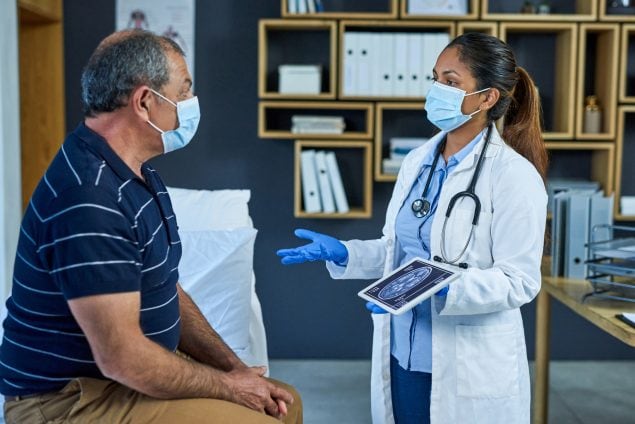Epilepsy Can Follow Traumatic Brain Injury

Did you know that traumatic brain injury (TBI) can cause epilepsy and seizures? Learn the signs of both and how to protect your health.
A traumatic brain injury (TBI) happens when someone gets a bump, blow, or jolt to the head, or a penetrating injury to the head (such as a gunshot).1 TBIs can range from mild (such as concussions) to severe, life-threatening injuries. They can cause changes in:
- Thinking and remembering.
- Vision and balance.
- Emotions, such as anxiety, irritability, or sadness.
- Sleep.2
TBIs can happen to anyone, but some groups are at greater risk of dying or having long-term health problems after the injury.3 These groups include racial and ethnic minorities, service members and veterans, people experiencing homelessness, people in correctional and detention facilities, survivors of intimate partner violence, and people living in rural areas.3 This can be due to factors such as less access to TBI care or a history of TBI.3
The Connection Between TBI and Epilepsy
TBIs can also cause epilepsy and seizures. Epilepsy is a broad term used for a brain disorder that causes repeated seizures. There are many types of epilepsy and there are also many different kinds of seizures. TBIs can cause a seizure right after the injury happens or even months or years later. Researchers agree that the more severe the TBI, the greater the chance the person may develop epilepsy.4 Age and other medical conditions may also play a role in whether someone develops epilepsy after a TBI.
The terms post-traumatic epilepsy and post-traumatic seizures are both used to describe seizures that happen because of a TBI.5 A CDC-funded study found that among people aged 15 years and older hospitalized for TBI, about 1 in 10 developed epilepsy in the following 3 years.4
Did You Know?
Sometimes it can be hard to tell if someone is having a seizure. Some seizures cause a person to fall, cry out, shake or jerk, and become unaware of what’s going on around them. Other seizures can make a person appear confused, have trouble answering questions, twitch, or feel like they taste, see, or smell something unusual.
How to Recognize TBI and Epilepsy:
- Learn the signs and symptoms of TBI and when to seek medical care.
- Take one of CDC’s HEADS UP trainings to learn how to recognize, respond to, and minimize the risk of concussion or TBI—especially if you’re a parent, coach, childcare provider, or school professional.
What to Do When Someone Has a TBI:
- Seek medical attention and share information about TBI signs and symptoms.
- Talk to a doctor about the risk of having seizures or developing epilepsy after a TBI.
- Learn to recognize the signs of a seizure.
- Learn first aid so you are prepared if someone has a seizure.
How to Prevent TBI and Epilepsy:
- To prevent TBIs that may cause epilepsy, protect the brain from injury. For example:
- Use seat belts every time you drive or ride in a motor vehicle.
- Make sure infants and small children ride in properly installed car or booster seats.
- Never drive while under the influence of alcohol or drugs.
- Wear a helmet when playing certain sports and riding bikes, horses, motorcycles, or all-terrain vehicles.
- Help prevent falls, especially in older adults and young children.

Always wear a helmet when riding a snowmobile or bike to prevent serious brain or head injuries!

If you or someone you care for has had a traumatic brain injury, talk to a doctor about the risk of seizures and epilepsy.
- Centers for Disease Control and Prevention. Get the Facts About TBI website. Accessed December 30, 2022. https://www.cdc.gov/traumaticbraininjury/get_the_facts.html
- Centers for Disease Control and Prevention. Symptoms of Mild TBI and Concussion website. Accessed December 30, 2022. https://www.cdc.gov/traumaticbraininjury/concussion/symptoms.html
- Centers for Disease Control and Prevention. Health Disparities and TBI website. Accessed January 18, 2023. https://www.cdc.gov/traumaticbraininjury/health-disparities-tbi.html
- Ferguson PL, Smith GM, Wannamaker BB, Thurman DJ, Pickelsimer EE, Selassie AW. A population-based study of risk of epilepsy after hospitalization for traumatic brain injury. Epilepsia. 2010;51(5):891–898. doi: 10.1111/j.1528-1167.2009.02384.x
- Frey LC. Epidemiology of posttraumatic epilepsy: a critical review. Epilepsia. 2003;44(10):11–17. doi:10.1046/j.1528-1157.44.s10.4.x